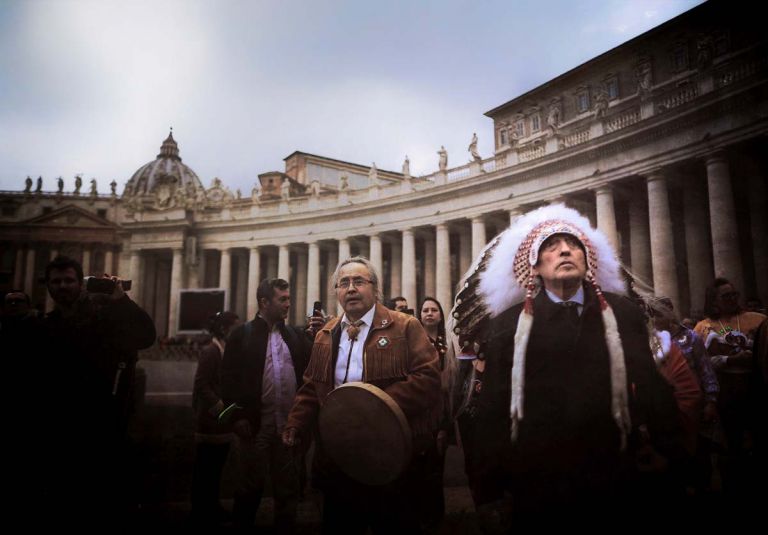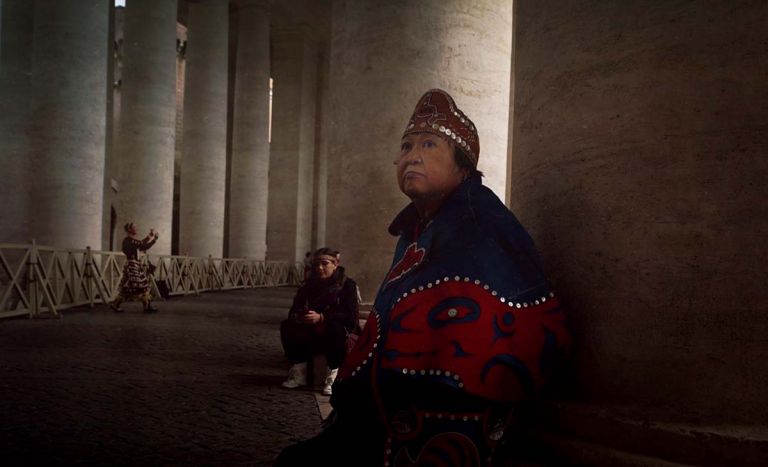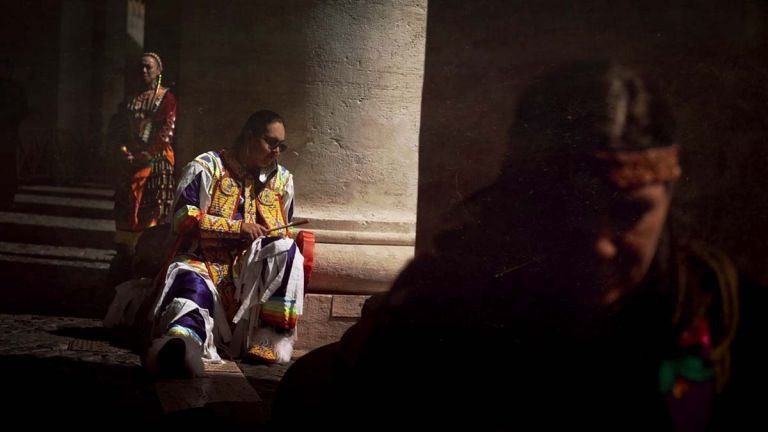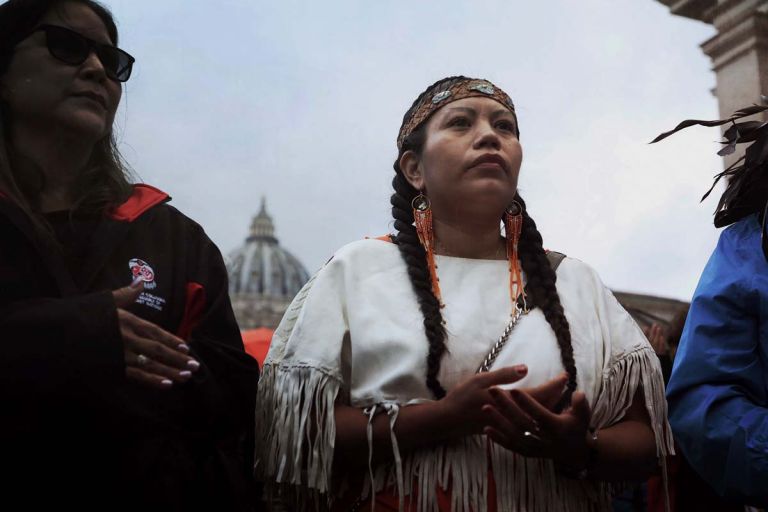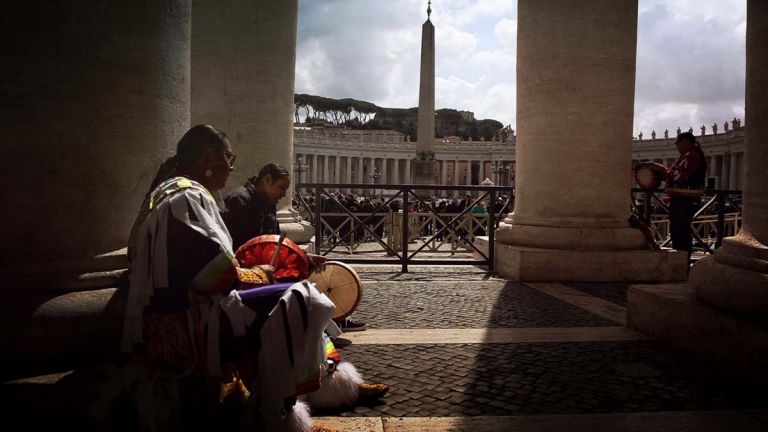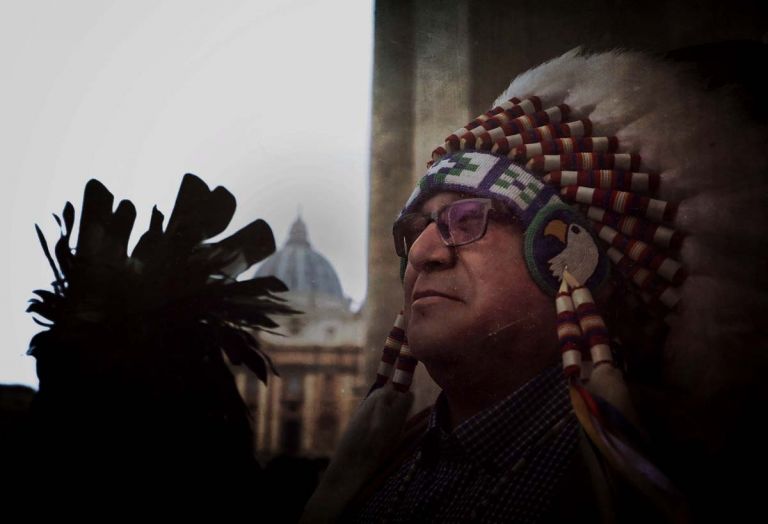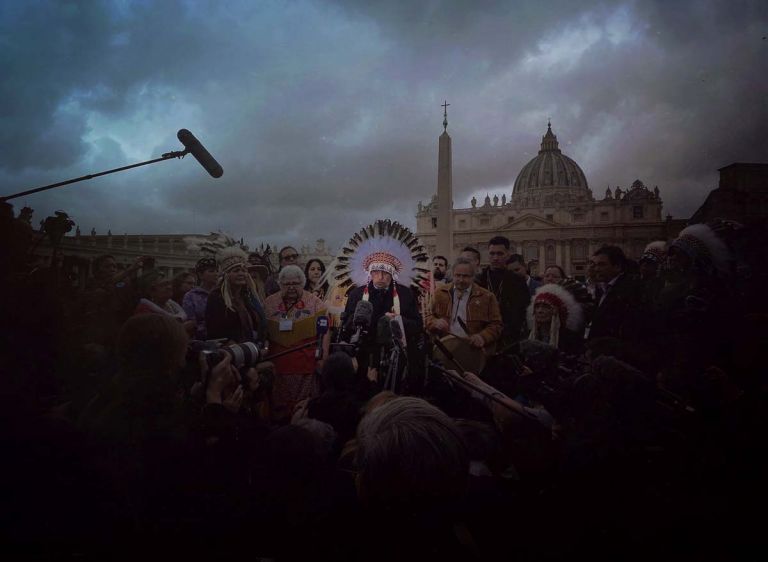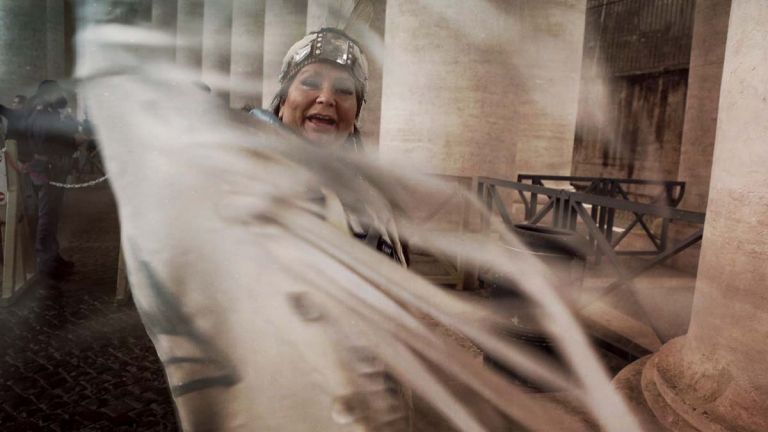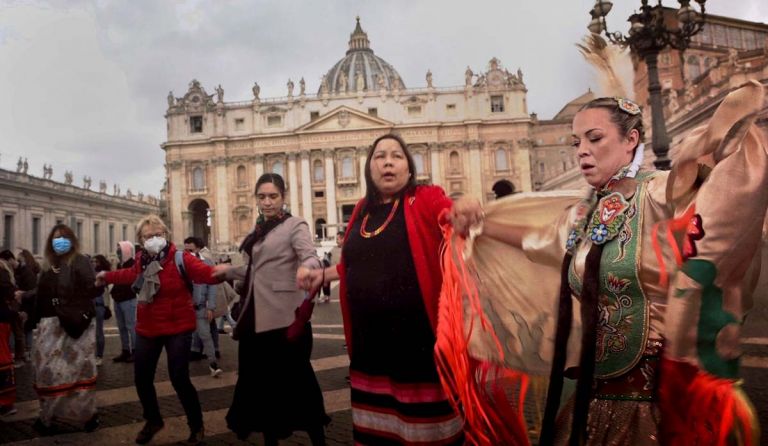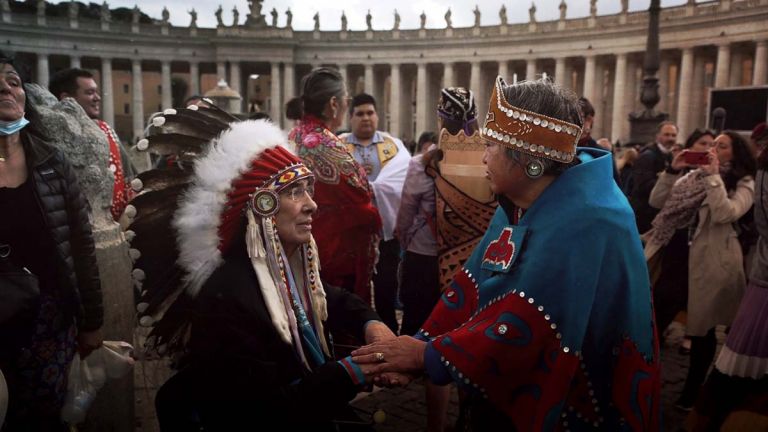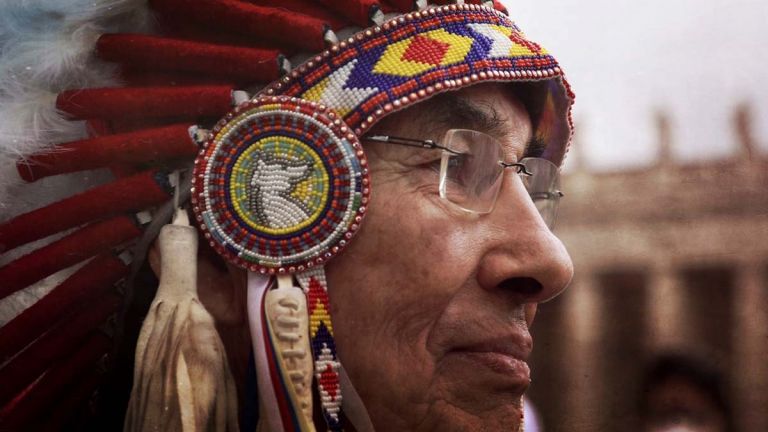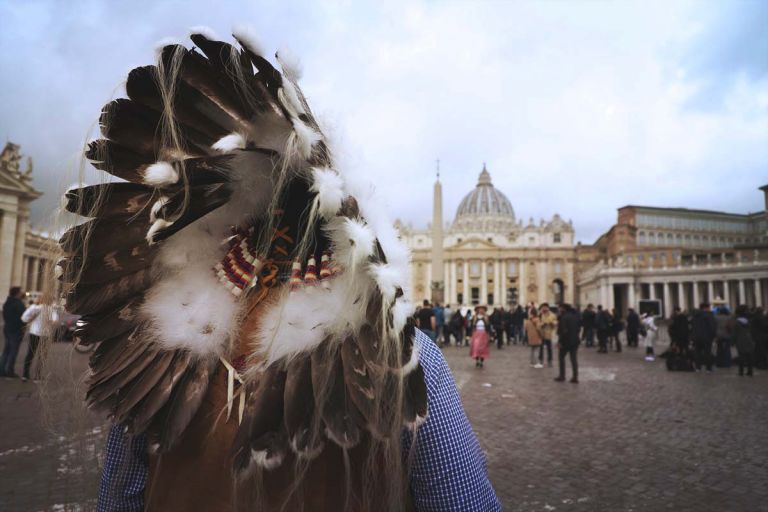‘The Longest Way Home” is a story of deep survival.
In 2022, a delegation of Canadian Indigenous People travelled to the Vatican, seeking the Pope’s apology for the Church’s role in the abuses suffered for over a century by indigenous children in the so-called residential schools, where they were forcibly separated from their parents and ‘thought’ to forget their language and traditions to be ‘assimilated and christianized’.
It was quite something to see the delegates from the First Nations, Inuit and Metis, proud in their traditional clothing, under St.Peter’s colonnade, waiting for their leaders to come out from the meeting the Pope. Exactly when Bernini was building the colonnade around 1650, beyond the ocean, France and England were fighting to dominate Canada and the history of violence that would eventually create the residential schools was beginning. Now, four centuries later, history had come to a time of reckoning under that colonnade. The Pope said the words Indigenous people had been longing for decades : ‘I am sorry”. Tears and dances in the square followed. It was an extraordinary moment.
Violence and bullying can destroy a person. But they can also have the opposite effect. Trigger revolt, give the victim the strength to reconquer himself. This happened to the survivors I met at the Vatican. As they emerged destroyed from the schools, they turned to their indigenous identity and reconquered it. They became a stronger version of what the schools had tried to erase. They had more than survived. So much more, that they had finally found a man, on the other side of the ocean, they could start the difficult and needed path of reconciliation with.
